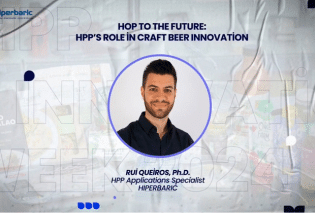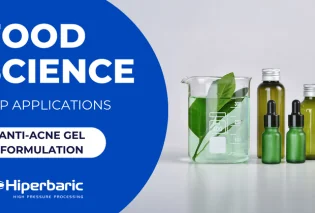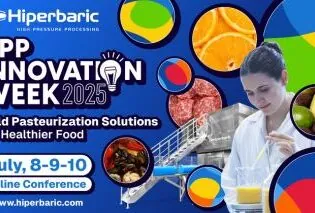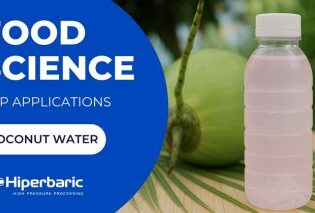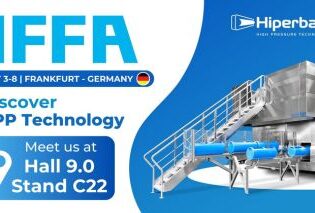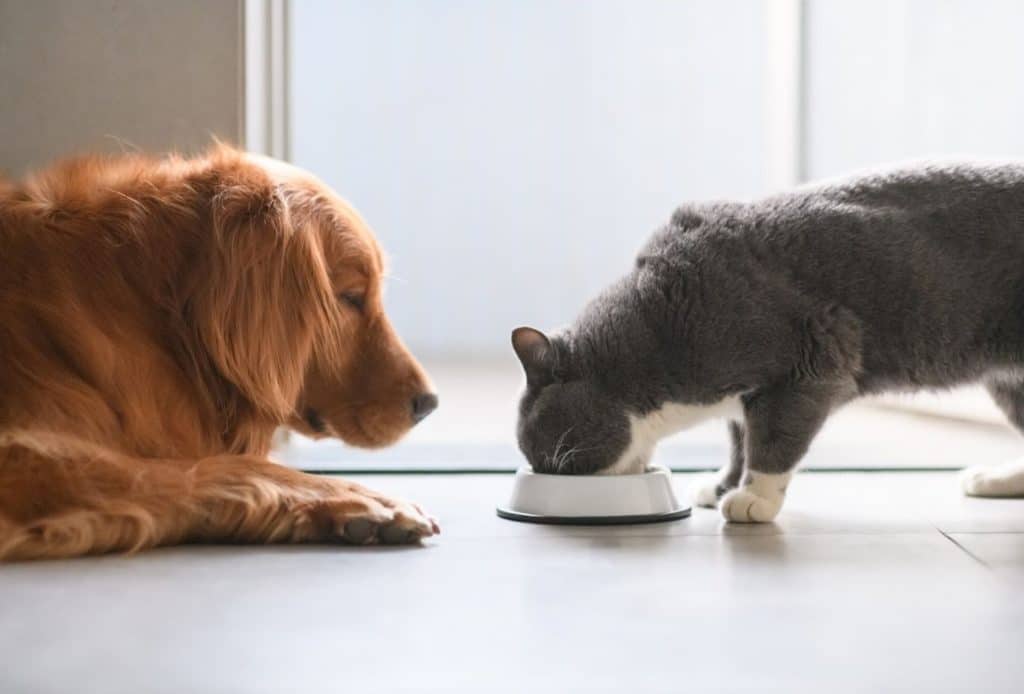
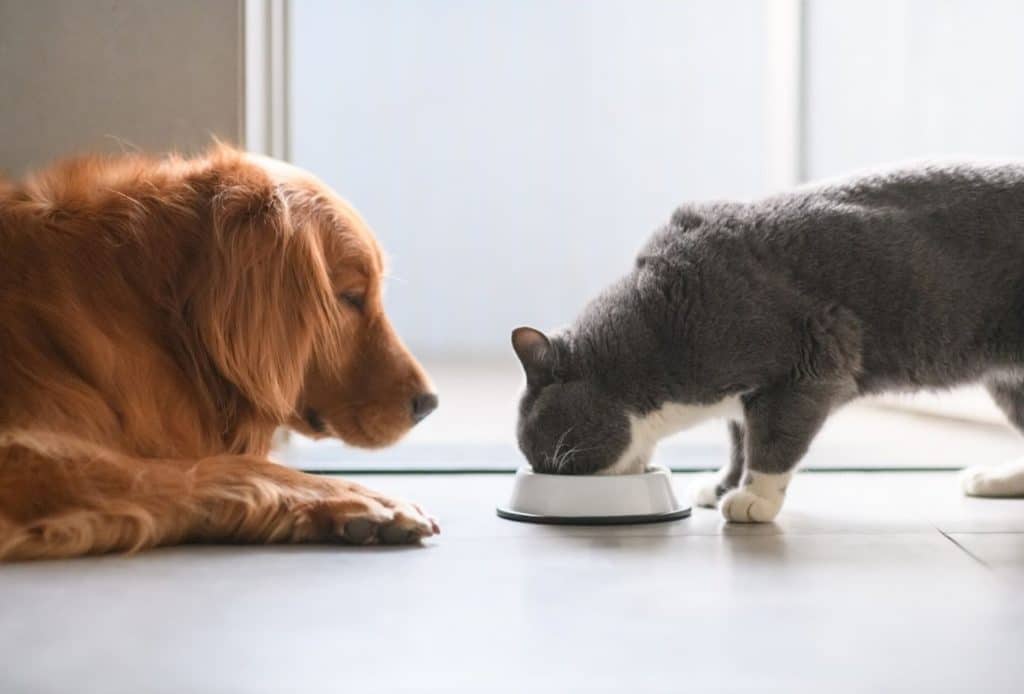
Is there a risk of raw pet food being unsafe for pets and pet owners?
Diets such as BARF (Biologically Appropriate Raw Food or Bones and Raw Food) based in raw meat products present several benefits, such as improved nutrition, healthier/regular digestion, cleaner teeth, shinier coat and relief from food allergies/sensitivities. However, raw pet food poses a health risk for both animals and humans since it can be contaminated with food-borne pathogens.
The meat or muscle of a dead animal is sterile but susceptible to cross-contamination by E. coli, Salmonella, Listeria monocytogenes and other pathogens during slaughter and/or other operations (i. e. grinding) if it gets in touch with other organs or contacts with contaminated surfaces.
In fact, the U.S. Food and Drug Administration (FDA) Center for Veterinary Medicine (CVM) conducted a study that comprised over 1,000 samples, reporting that Salmonella and Listeria monocytogenes were more prevalent in raw pet food (present in c.a. 16% of the tested food) than other forms of foods. In addition to bacteria, raw meat may present viruses or parasites such as worms, that may not be visible or barely visible to the human eye.
Although pets can be more tolerant to some bacteria, they are not completely immune. Furthermore, food-borne pathogen transmission from pet to owner is possible through the pet’s mouth, fur, skin, or any body part that comes in contact with contaminated saliva or feces. Additionally, the owner may inadvertently spread pathogens through kitchen surfaces or appliances by handling the raw pet food, risking cross-contamination if not properly sanitized.
It is for these reasons that both the Center for Control Disease (CDC) and the FDA have shared multiple resources to communicate consumers about the risk associated with unprocessed meat diets. Pet food processors also jeopardize pet and pet owner safety, along with brand trust and economic losses, if the potential presence of pathogens in pet food mandates a recall.

What is HPP?
High pressure processing (HPP) is a non-thermal food processing technology applied to minimize the risk associated with food-borne pathogens. The technology uses cold water (4-25 °C; 40-75 °F) to generate pressure (up to 87 kpsi, equivalent to 6000 bar), which allows foods to retain chemical compounds providing nutrients and the sensory experience to consumers. The following video, Hiperbaric High Pressure Processing In-Pack provides additional information and illustrates how industrial HPP units operate. The Hiperbaric Customer YouTube Channel shares success stories of HPP users processing meats and other food products.
Which pet food companies are using HPP?
HPP pet food has earned the trust and acceptance of pet owners and pets, making pet food companies more confident in switching to HPP. The graphic below enlists the logos and links of pet food companies using HPP. These companies publicly share the benefits of HPP, and have performed their independent studies to back up the science behind HPP. Click on their logos to visit their websites.
 |
 |
 |
 |
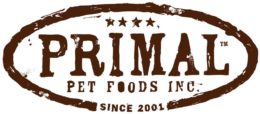 |
 |
For example, the “Steve’s Real Food’s Study of High-Pressure Processing on Raw Meat Diets” reports the effects of HPP on 95 vitamins, proteins, essential amino acids, fats, and fiber. The results showed that HPP did not alter the concentration of the analyzed components, as the change percentage remained between –1% and 1%. Only 4 out of the 95 tested components presented a notable concentration decrease following HPP. In this regard, Steve’s Real Food states on their website:
“We have updated the formulas as follows to ensure that in the HPP formula these vitamins are met in abundance above the AAFCO minimums.
- Increased Liver for more Vitamin A
- Increased Organ Meat overall for more Pantothenic Acid and Vitamin B12
- Increased the Muscle Meat for more Pyridoxine and Vitamin B12”
In terms of enzymatic activity, Steve’s Real Food also reported that HPP did not alter the activity of enzymes of interest. The finding is also supported by Primal Pet Foods, who shared that HPP did not affect enzymes of interest in the following link: “Why has Primal Pet Foods chosen to use High-Pressure Processing?”.
Additional information on the HPP effects on the nutritional profile of meats reported in peer-reviewed scientific journals is summarized in the Hiperbaric HPP white paper on food, which can be downloaded from the Meat Products section on Hiperbaric’s website.
For pet food companies leveraging HPP, the versatility of the technology allows them to process everything from small chunks and ground beef, all the way to large pieces (i. e. meaty bones, necks) with the same equipment to meet the needs for pet food nutrition and provide multiple product alternatives. The safety and shelf-life extension achieved with HPP allows these companies to confidently distribute their products and reach out to pets across the country, without risking the health of pets or pet owners, ultimately leading to a recall.
Are HPP pet food safe for pet and pet owners?
HPP effectively minimizes the risk associated with bacteria, meeting or exceeding 5-log reductions of pertinent pathogens like E. coli, Salmonella and Listeria monocytogenes as summarized in Appendix C. HPP is also enlisted as a process control to minimize the risk associated with pet food pathogens in Section 4.5.1 of Guidance for Industry # 245. Hazard Analysis and Risk-Based Preventive Controls for Food for Animals
What is the shelf-life of HPP pet food? Is it compatible with other pet food interventions like freezing, freeze-drying and fermentation?
In addition to food safety, HPP allows to extend shelf-life by slowing down the growth of spoilage microorganisms like yeasts and molds. This achieves between 14-35 days of shelf-life in refrigerated storage, compared to 7-10 days of unprocessed products. Bacteria and other microorganisms adapt to different unfavorable environments and might survive freezing, freeze-drying, or fermentation. Applying HPP acts as a “kill step” for food-borne pathogens, and the combination with other hurdles like cold storage (refrigeration, freezing) or freeze-drying further minimizes the risk and extends shelf-life. For example, the combination of HPP and freezing yields up to 2 years of shelf-life. Freeze-drying achieves also up to 2 years but makes the HPP pet food stable for ambient temperature storage.
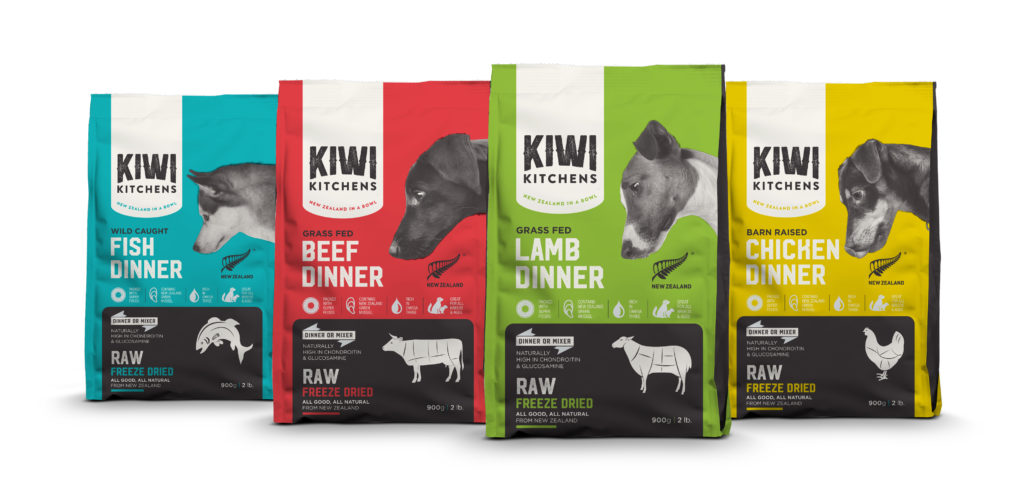
Regarding the fermentation process, it modifies and acidifies a food product to provide a new sensory experience, just like the fermentation process where bacteria turns milk into cheese. Nonetheless, bacteria will continue to ferment the product until it spoils the food if the product is not properly handled. Pathogens are also able to survive the fermentation process, an example is that numerous food-borne illness cases occur every year due to the consumption of raw cheese. Applying HPP reduces pathogen loads and stops fermentation (see HPP during drying of fermented sausages to enhance safety and stability), extending the shelf life of foods to 30-75 days
On the other hand, HPP also has limitations as any other food processing technology that may be complemented by any of the previously discussed pet food operations. For example, spores may be thought of as war bunkers, where bacteria hide and survive HPP, some of which are food-borne pathogens. Freezing lowers the temperature, freeze-drying takes away water resources needed for growth, whereas fermentation acidifies the food, yielding conditions not favorable for growth and forcing spore-forming pathogens to remain hidden inside the spore
Does HPP harm probiotic bacteria?
As stated above, HPP does not eliminate bacterial spores. This can be taken into an advantage if the processor opts to include probiotics that are spore formers for the creation of functional pet food. Bacillus coagulans, commercially available as GaneenBC30®, is available in numerous HPP beverages for human consumption as described in this blog post.
Furthermore, various species of lactic acid bacteria considered as probiotics are also resistant to high pressure, as detailed in the following patent that covers its use in different foods like dairy and vegetable juices. In fact, species of lactic acid bacteria surviving HPP might serve as a natural approach to inhibit the growth of pathogenic spore formers in HPP meat products for human consumption
Is HPP pet food considered raw?
The definition of “fresh” foods in paragraph (a) of 21 CFR 101.95(a) states: “The term ‘fresh’, when used on the label or in labeling of a food in a manner that suggests or implies that the food is unprocessed, means that the food is in its raw state and has not been frozen or subjected to any form of thermal processing or any other form of preservation, except as provided in paragraph (c) of this section.”
While HPP foods are not considered “raw” under this definition, HPP is among the most benevolent and gentle processes, which is why consumers often associate HPP foods with premium quality. Pet food is no exception as broadly described in previous sections.
Although “processing” is viewed as something completely unwanted, it is important to note that many times it is necessary and beneficial. Still, it is essential to discern between ultra-processed and minimally-processed. Since 2017, several nutrition epidemiologic studies have demonstrated the direct correlation of Ultra-Processed Foods (foods containing chemical additives and subjected to multiple severe processes like sterilization) and the global human epidemic of obesity, diabetes and cardiovascular diseases. Nutritionists’ recommendation is to opt for raw or Minimally-Processed Foods, as food processing is, in many cases, indispensable to have safe, tasty and convenient products. In the case of meat-based products, the safety issue is the main criteria to decide in favor of a minimal processing permitting microbial inactivation, like HPP, against no processing.
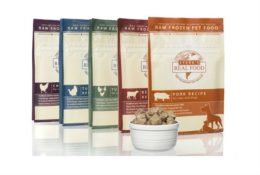
In the meat industry for human consumption, Listeria monocytogenes remained a constant threat in the consumption of RTE meats such as sliced ham, turkey, hot dogs, and many others, until the widespread implementation of HPP in the early 2000’s. Outstandingly, no Listeria outbreaks have occurred in RTE meats for human consumption processed with HPP, practically eradicating listeriosis hazards for consumers. This allowed processors to eliminate or notably reduce the salt content and chemical preservatives, without altering the quality of HPP meats as described in Food Business News and Food Safety Magazine. HPP benefits are not unique for pets, as the technology is well established and plays a transcendent role in delivering safe, nutritious, and clean label products for human consumption as summarized in the image below.
![]()
Does HPP change the color of meat?
Indeed, HPP induces a “cooked-like” appearance in uncooked pet foods, despite most of the nutrients remain unchanged. The color change is related to slight structural changes, but the nutritional value of the protein and its amino acid sequence remains intact as reported in the “Which pet food companies are using HPP?” section of the present document. The inclusion of natural ingredients such as beets or grape pomace improves the red color of HPP meat, and still remain delicious for pets.
Is the FDA mandating the use of HPP?
Totally false. The U. S. Food & Drug Administration gives processors complete freedom to choose the appropriate hurdles that will ensure the safety of pet and pet owners, some of which are enlisted in Chapter 4 of Guidance for Industry # 245. Hazard Analysis and Risk-Based Preventive Controls for Food for Animals. From the suggested control approaches, the present document highlights how HPP and its combination with other technologies provide a balance between pet food nutrition, safety, quality, shelf life extension, and convenience for pets and their owners, and pet food manufacturers.


